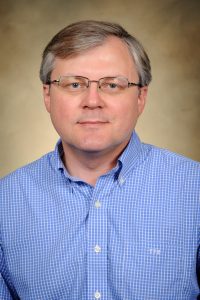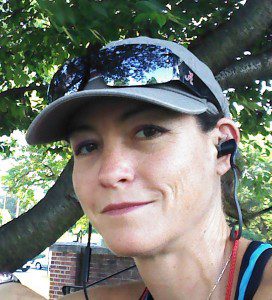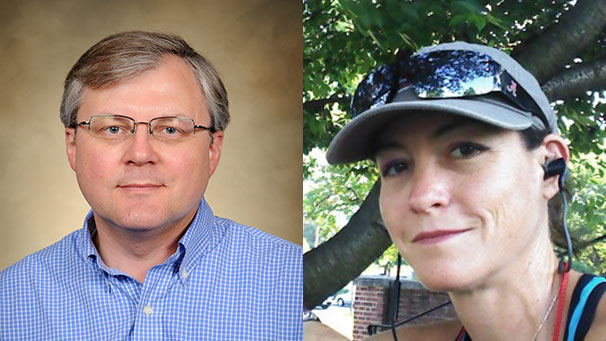TUSCALOOSA, Ala. — The National Science Foundation selected two University of Alabama professors, Dr. Alexey Volkov and Dr. Kimberly Genareau, for CAREER Awards for their research.
The multi-year awards fund both basic research and the development of educational materials for children.
Genareau, assistant professor of geological sciences, will receive a five -year grant of $433,000 to study volcanic eruptions and lightning. Volkov, assistant professor of mechanical engineering, will receive $500,000 to study ceramic-based nanocomposite materials.
Dr. Alexey N. Volkov

With funding from his CAREER Award, Volkov hopes to develop a number of computer models that simulate specific ways to enhance ceramic-based nanocomposite materials, deepening scientific understanding of the process of material fabrication while also showing a way to make the materials stronger and more durable for certain applications, such as within the aerospace industry.
Porous materials composed of nanoparticle, or nanotubes covered by ceramic coatings, have a potential to transform engineering approaches and make critical advances in such fields as the design of ultra-light-weight and multifunctional aerospace structures, electric energy generation, conversion and storage, gas separation and purification, flexible electronics, optics and biomedical applications. The ceramic coatings increase the mechanical performance of nanoparticle films and nanotube networks.
The methods of gas-assisted synthesis to create the materials, including methods known as Atomic Layer Deposition and Chemical Vapor Infiltration, provide precise and gentle routes to forming the porous materials with tunable properties. The factors affecting the dynamics of transient growth of thin ceramic coatings, their reinforcement ability, and performance of synthesized materials, however, remains mostly unknown. The project aims to establish a link between parameters of raw nanoparticles and material synthesis on the one hand and the structure and properties of synthesized materials on the other hand.
“A large part of this project is to simulate these two processes and optimize them,” Volkov said. “We will simulate both processes of material synthesis, and, at the end, test the properties of virtually fabricated materials. Then we will know how the properties of raw materials and the parameters of synthesis process affect the properties of final materials.”
Through developing a computational model as a virtual lab, Volkov hopes to better understand gas-assisted material synthesis for producing nanocomposited materials. This could help in crafting lighter multifunctional materials with the durability and strength surpassing those used currently in the aerospace industry, which could help spacecraft shave weight for travel beyond Earth’s orbit, he said.
“It can be really life changing for some applications such as aerospace applications,” Volkov said.
Dr. Kimberly Genareau

Genareau will lead experiments to observe the chemical changes that occur in volcanic ash when struck by lightning by performing a series of triggered lightning experiments on manufactured ash samples of known composition and grain size.
Textural and geochemical data acquired on the samples will provide evidence for volcanic lightning in the geologic record, allowing researchers to identify these events during eruptions that preceded or eluded human documentation. Results will also reveal the role that lightning plays in altering the chemical characteristics of the local environment.
“Volcanic eruptions and lightning strikes are two of the most impressive and destructive natural phenomena, but much is still unknown about the fundamental processes that allow these events to occur,” said Genareau, a researcher in UA’s College of Arts and Sciences. “An emerging line of research is seeking to determine the complex relationship between explosive volcanism and lightning, specifically the effect of lightning discharge on the textural and chemical properties of’ volcanic ash and the resulting signature of volcanic lightning occurrence in the geologic record.”
A research team of graduate, undergraduate and high school students will perform the experiments and analyze the samples. The grant encompasses developing a curriculum for grade-school students on natural hazards to pique their interest in earth sciences.
Through scientific and community presentations, this project will build further interest in volcanology, atmospheric dynamics, and the complex interplay between these natural phenomena, not only in the scientific community, but also in schools and among the general public.
According to the NSF, the Faculty Early Career Development, or CAREER, Program “is a foundation-wide activity that offers the National Science Foundation’s most prestigious awards in support of junior faculty who exemplify the role of teacher-scholars through outstanding research, excellent education and the integration of education and research within the context of the mission of their organizations. Such activities should build a firm foundation for a lifetime of leadership in integrating education and research.”
Contact
Richard LeComte, media relations, rllecomte@ur.ua.edu, 205/348-3782; Adam Jones, UA media relations, 205/348-6444, acjones12@eng.ua.edu
Source
Dr. Alexey N. Volkov, 205/348-4882 avolkov1@bama.ua.edu; Dr. Kimberly Genareau, 205/348-1184, kdgenareau@as.ua.edu
